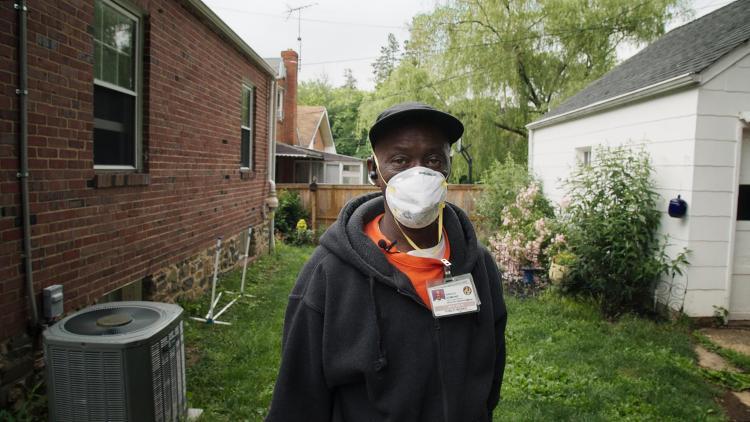Rats in Baltimore have a dilemma.
“Norwegian rats can jump 32 inches high,” according to a voiceover in _Rat Film_. “Baltimore trash cans are 34.”
The idea for the essay documentary came from director Theo Anthony’s “haunting” cell phone video of a rat he heard trying to escape a trash can after he came home one night. From there, Anthony decided to take on the filming of _Rat Film_.
The futuristic documentary, shown at True/False Film Festival, explores the stark contrast between rats as pets and rats as vermin. Anthony branches from that to compare the high population of rats, the historical context of city planning and the separation in the city. The film also ends with a chilling message: Even if we started over, the same thing would happen.
_Rat Film_ successfully made the audience think about rats, but more than that, it made viewers think about the way the citizens of Baltimore were trapped in “red zones” that almost certainly meant poverty, unemployment, higher arrest rates and lower life expectancy.
Anthony said in the post-screening discussion that he spent two months in a cabin in New York editing the film. Instead of going back home to Maryland to get extra footage, Anthony stayed in his cabin and decided to explore Google Maps for a picture of the city. In the final cut, he decided to include this footage to show the people of Baltimore stopped in the middle of their lives.
These clips are featured prominently in _Rat Film_, aiding voice actress Maureen Jones’ intentionally cold voice in creating a dystopian feel throughout the whole film. The chilling voice-over lacks empathy which contrasts with the persona of one of the central figures of the film, Harold Edmond.
One of many, Edmond is a member of the Rat Rubout team in Baltimore. He cares passionately about the people who live in his district and works to please his inhabitants. Anthony spoke fondly of Edmond as a person, and his charming personality is artfully paired with the reality of what his job is.
When it comes to the actual rat footage in this film, I was expecting to be grossed out. In reality, I was pleasantly surprised that all the live rats in the film were quite clean, as is their nature. By the end of it, I was actually feeling pretty protective of these creatures from the streets of Baltimore.
I was also amazed at what Anthony told viewers in the post-movie discussion. The entire editing structure of the film was based on the pops that can be heard often throughout the documentary. Those pops? The sound of a rat’s brain waves. Check out an example here:
So much of the documentary left me in awe of how Anthony found this extensive rat subculture and then was able to connect it to a virtual reality game and with the work of scientists about the planning of Baltimore. The glitches in the game, the hopeless people in society and the rats are all molded into one film.
This film was truly a pleasure to watch, and despite my wariness about the rats, it was a moving documentary. In truth, the words of the director sum it up best:
“I’m making a movie about rats … but not,” Anthony said.
Anthony is now working on a documentary called _The Body Builder_, coming “soon-ish.”
Interested in this documentary? Watch the trailer here:
**MOVE gives _Rat Film_ 5 out of 5 stars.**








